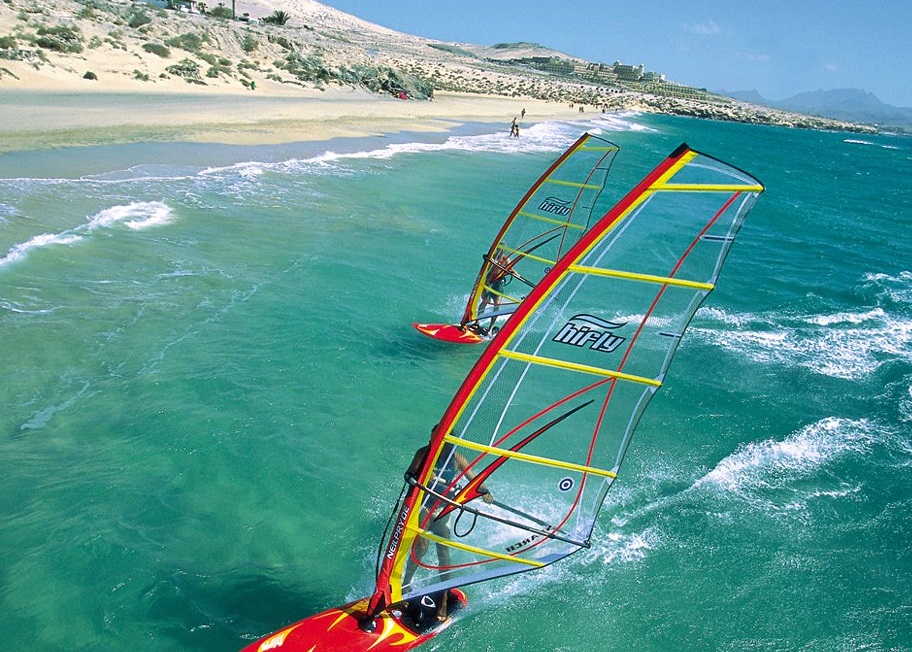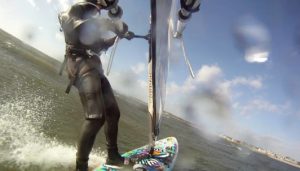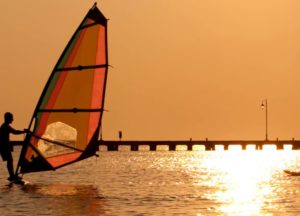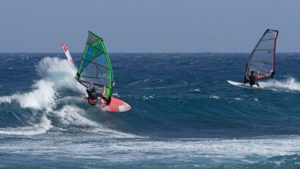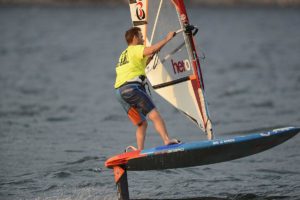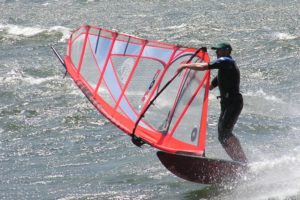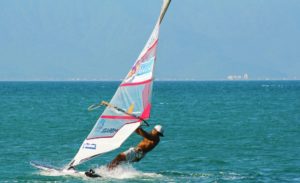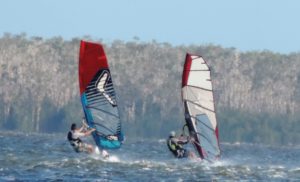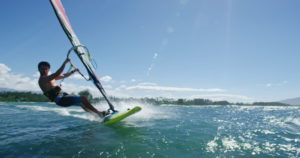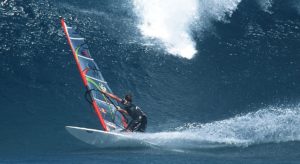There are two basic categories of boards used in the water sport of sailboarding, the long board and the short board. The types of board developed along with the windsurfing sport.
While the long board is the versatile workhorse of the windsurfing stable, the windsurfing short board is the high adrenaline board.
Most sailors learn on a long board, with those seeking more speed, fun and thrills quickly progressing to the short boards.
Windsurfing Short Boards
The difference between a windsurfing short board and the long board is that the short board sits up on the plane when moving. While the long board slugs along in the displacement mode though the water, the short board gets up out of the water and skims or skips along the surface. Very much like a surfboard screaming down the face of a wave, the short board becomes more manoeuvrable the faster it goes.
The small bulk of a short board doesn’t provide enough buoyancy to enable a sailor to stand on the board without sinking. This makes it very tricky for beginners to learn on as it is difficult to do the uphaul start with the board sinking.
The windsurfing long board will usually have a centre-board or dagger board that is needed to provide resistance against the sideways motion the sail impacts on the board and get the board moving forward. The short board usually doesn’t have a centre-board, relying on the fact that it is sailed on the plane in order for the sideways force to convert to forward movement.
Starting a Windsurfing Short Board
Because the short board generally won’t hold the sailor’s weight, it is nearly impossible to do an uphaul start. Proficient short board sailors use two common ways to start a short board:
- The windsurfing deepwater start
- The windsurfing standing start
The deepwater start is done with the sailor lying in the water, with the sail above their head. The wind in the sail then pulls the sailor up and onto the board.
The other common type of short board start is the standing start. This is where the sailor holds the sail while standing in shallow water beside the board. When everything is right, the sailor steps onto the board with the sail and is away.
Types of Windsurfing Short Boards
Windsurfing short boards can be generally classified into two different types:
- The wave board – used in the surf, with rounded rails; very similar in shape to a standard surfboard.
- Slalom boards – used for flat out, fast sailing on flatter water. Generally light and not as robust as the wave boards.
The windsurfing short boards can be made of fibreglass, like a standard surfboard.
Turning a Windsurfing Short Board
Turning a short board is the fun part, and can be a real challenge to master. The optimum turn for a short board is where the board stays on the plane throughout the turn. When executed correctly it is fast, with the speed of the board actually increasing during the turn.
The most common turn is the carve gybe where the board turns with the wind.
Another spectacular type of turn is the duck gybe. This is a unique turn where the sail is thrown forward during the turn with the sailor ducking underneath the sail as the board carves through the turn.
Tricks on a Windsurfing Short Board
The windsurfing short board is a great form of high speed sailing. There are many tricks and techniques that a proficient sailor can do on a short board.
- Wave sailing – riding waves like a surfboard
- Jumps – either chop jumping or huge leaps off waves in the surf
- Body drags – the sailor steps off the board letting their body drag along the surface of the water
- High speed sailing – competition to go the fastest over a set course. Or simply going flat out on a broad reach for the sheer excitement.
The windsurfing short board is a fun machine. High speed, fancy tricks, sailing in the waves, jumping are all things that make sailboarding on a short board an exhilarating water sport.

